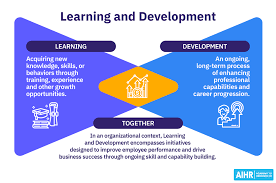
The workplace of the future continuously evolves, making lifelong learning an essential aspect of any career. As technology accelerates and the global economy demands more agility, Learning and Development (L&D) within organizations have to adapt swiftly to keep pace.
One transformative trend is the increasing emphasis on personalized learning. Traditional one-size-fits-all training programs are giving way to more tailored experiences that focus on individual employees’ skills and career paths. Advances in artificial intelligence and data analytics allow learning platforms to customize content, ensuring that each employee receives training relevant to their current capability and future potential.
Microlearning is another strategy set to dominate workplace L&D. This approach breaks down information into small, easily digestible modules, making it easier for employees to learn between tasks or during short breaks. It capitalizes on research suggesting that people learn more effectively in short bursts.
The role of social learning is also expected to expand dramatically. Encouraging employees to teach and learn from each other leverages the collective knowledge within an organization. This social approach not only fosters a culture of continuous improvement but also helps cement a collaborative environment.
Virtual reality (VR) and augmented reality (AR) are mainstream in several industries for hands-on or dangerous training scenarios that would be cost-prohibitive or impractical in real life. As the cost of these technologies decreases, they will likely become regular fixtures in many industries’ L&D programs for their ability to simulate realistic environments and scenarios.
Additionally, the gamification of learning is set to thrive beyond its current use. Gamification elements like point scoring, competition with others, and rules of play add an element of fun and increase engagement which can lead to higher retention rates of the learned material.
The integration of work and learning is another important theme. More organizations are realizing that effective L&D isn’t separate from day-to-day activities but embedded within them. Future workplaces might witness the rise of ‘learning in the flow of work,’ where learning interventions are seamlessly integrated into daily tasks.
Lastly, the advent of remote working necessitates a transformation in L&D strategies. Remote learning technologies such as webinars, e-learning courses, and collaboration tools will become even more refined to help remote employees stay connected and continue developing their skills without feeling isolated.
In conclusion, thriving in the future workspace necessitates keeping abreast with emergent technologies and methodologies in L&D. Businesses that invest in creating flexible, personalized, technology-enhanced learning environments will be better equipped to meet the challenges of tomorrow’s economy head-on and retain top talent by providing pathways for continuous personal and professional development.
